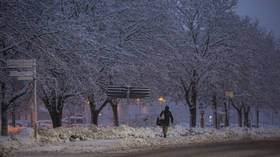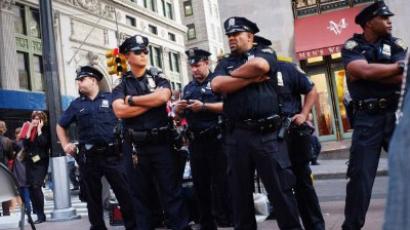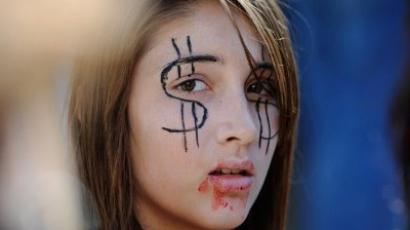Occupy Wall Street – a day in the life of a protester
Some of the US mainstream media outlets have called the Occupy Wall Street protesters unorganized slackers who don’t know what they’re really doing out on the streets. RT takes a look at what a day in the life of a demonstrator is really like.
When not maced in the face or dragged around during police arrests, a peaceful tone prevails at the Occupy Wall Street protests. Hundreds of people have been out on the streets of New York’s financial district for over three weeks, all day and all night. Sleep here is scarce with the camp abuzz around the clock.“It’s only really the dead of night, maybe for three hours, maybe from 3 to 5, when it really calms down some,” said Rick DeVoe, a volunteer with the Occuyp Wall Street press team.The crowds have been consistently growing. “I just took the train down from Buffalo, New York to show support,” said student Dave Koszka.A daily schedule has kept the occupation in order. “Breakfast is 9 a.m., we have a General Assembly meeting or working group meeting, so that working groups can address the things that they might need for that day,” said outreach group volunteer Ronnie Nunez.Volunteers at these groups are busy all day long. The media center live streams video of developments from the ground. Others spread information and petitions on paper.“We don’t want to give any more tax cuts for millionaires. The economy is not in any position right now to give millionaires a tax cut when everyone is suffering. We can’t pay teachers. We can’t pay for people’s healthcare. Basically, people don’t have jobs,” said activist Amy Miller. The Occupied Wall Street Journal published by the people, for the people, is spread around. “We had a media blackout so no one knew about it. You’d talk to common people, and they’d be like, 'we don’t know what’s even happening,'" added Koszka. A big screen with messages set up by occupiers reflects growing global support.“What we have here is now over 250,000 people have signed a pledge of support for the occupiers saying we’re with you, we stand with you, we are united in the fight for real democracy and against corruption and for a government that’s truly accountable to the people and not corrupt elite,” said global campaigner Mia Cambronero. The kitchen is constantly abuzz with people preparing meals for other occupiers. Those working in sanitation are busy keeping the camp clean. Comfort and medication area volunteers give out warm clothes and emergency assistance.“As the matter for rest rooms, we make due. There are surrounding areas to use the facilities. As far as intimacy, in the crowds, you know, it’s dark at night, so I couldn’t imagine wondering about what’s going on under everyone else’s covers,” described protester Cory Thompson. Daily needs brushed aside, self-education has occupied many. “I spend a lot more time reading, versus like television or playing video games,” said newspaper stand volunteer Michael Wallace. When they are not marching the streets of the Financial District, they demonstrate at the camp. Those with a creative streak paint and draw sketches to document the revolution.To relax some play chess or take yoga and meditation classes.The General Assembly meetings pull everyone together. Held during the day and then at night, that’s where the big decisions are made through direct democracy, as protesting continues for one cause – to change a corrupt economic and financial system.“99 percent of the country don’t have control of the wealth as they should – it’s not evenly distributed. One percent of the country owns 42 percent of the wealth,” said hip-hop artist and poet Talib Kweli to RT. The day of a protester is packed. The mind occupied with revolution. The people out on the street want to bring real change to America through protest – the only way they see left.













